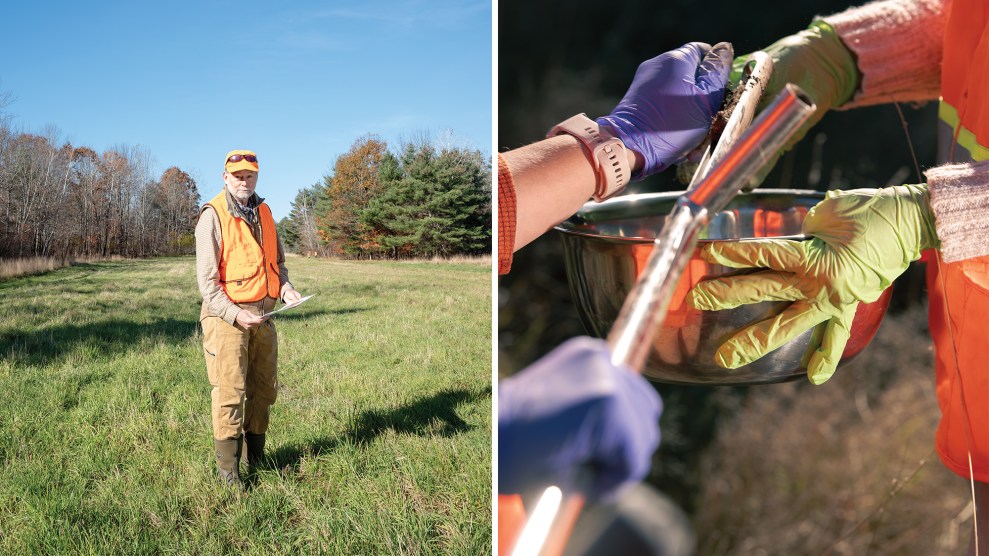Welcome to the first in an occasional series called “Bureau Brews” (Too nerdy? What about “Keg Stands?”) in which reporters and editors in Mother Jones‘ DC Bureau will do what we do best… drink beer. Really, it’s our birthright as journalists, and we take the responsibility quite seriously. (Read our hero Jack Schafer’s classic treatise on the subject here.) So, every once in a while, probably on Fridays after we’ve filed our stories for the week, we’ll break out the bottle opener and let you know what we think of various imported beers and their domestic craft cousins.
Our first victim is a local craft brewery called Hook & Ladder, based in Silver Spring, Maryland. (Disclaimer: I happen to know their PR guy. He’s a mensch.) The brewery was founded by two brothers—one a volunteer firefighter, the other an entrepreneur—who, in 1999, decided to combine their talents to open a craft brewery. They originally based it in the Bay Area, but the dot-com bust scared off investors, and the fledgling business fell on hard times. Since then, they’ve relocated to suburban Washington, DC, where, in 2005, they renewed their quest to quit the rat race and make beer for a living, this time with great success. As of October 2006, Hook & Ladder had only one distributor and was available only in the DC area; today, it’s got 73 distributors in 20 states, mostly along the East Coast, although for some reason it’s also available in Stockton, California, or so we’ve been told.
One thing to note before we proceed to reviewing the merchandise is that Hook & Ladder, true to its firefighter founders’ wishes, donates one penny from every pint sold to local burn centers. In the last two years, this has amounted to no less than $30,000. Could it be that drinking beer has finally become tax deductible? We’ll have to look into that…
Now for the beer. Hook & Ladder produces three: a low-cal beer called “Lighter,” a golden ale called, appropriately enough, “Golden Ale,” and…the brewery’s masterpiece, “Backdraft Brown.” It should be noted that, although we’re reporters and therefore have a certain knack for beer drinking, we are not professionally trained connoisseurs. So, we thought we might start by stating our biases in terms of favorite beers. Dan has a thing for Lone Star (“a Texas-style Bud,” he says); Jonathan is a fan of New Belgium Brewery’s Fat Tire, Nick prefers Newcastle Brown; and I tend to like most things Dogfish Head (except the IPAs, which I can’t stand). David Corn prefers rum, but we let him play anyway. (Laura and Stephanie were out today, but hopefully will join us next time.)
Without further ado… (note: for more serious criticism, click on the beer to be taken to ratebeer.com):
LIGHTER:
Not our favorite. Watery and thin. Definitely a low-cal brew. Appropriate for those paranoid about their waistlines, but not for us. We require a bit more flavor and, to put it bluntly, high-alcohol punch at the end of the week. (Now, it didn’t help that we sampled it from paper cups… which added the oh-so-gentle sweetness of industrial laminate. We’ll remember to bring beer glasses next time.)
GOLDEN ALE:
Better. Stronger. Pours with a thick, white head (again, partially the result of our paper cups). Creamy, smooth, with hints of honey. We’ll have to try this some more…
BACKDRAFT BROWN:
But not before we drink more Backdraft Brown. A big hit with us, and particularly with Nick for its similarity to Newcastle. Opaque brown in color with a thick, tan head the persists for a while. A nice balance of hops and malt, but more bitter than beers of similar styles. Hints of chocolate? Definitely worth sampling if you have the chance.
And that’s it: short and simple. This is, after all, just an excuse for us to drink in the office on a Friday, which, in our humble opinions, is as good a reason as any. We hope you’ll indulge us for future posts. Cheers.















